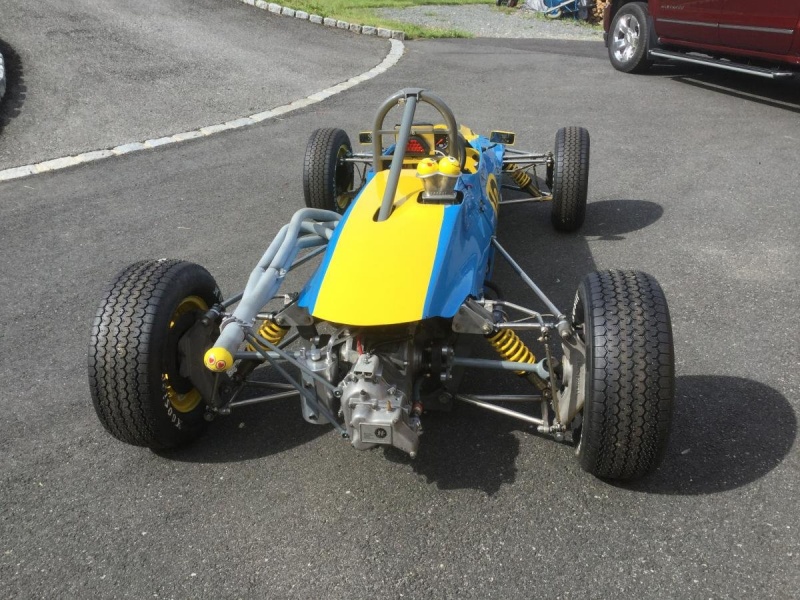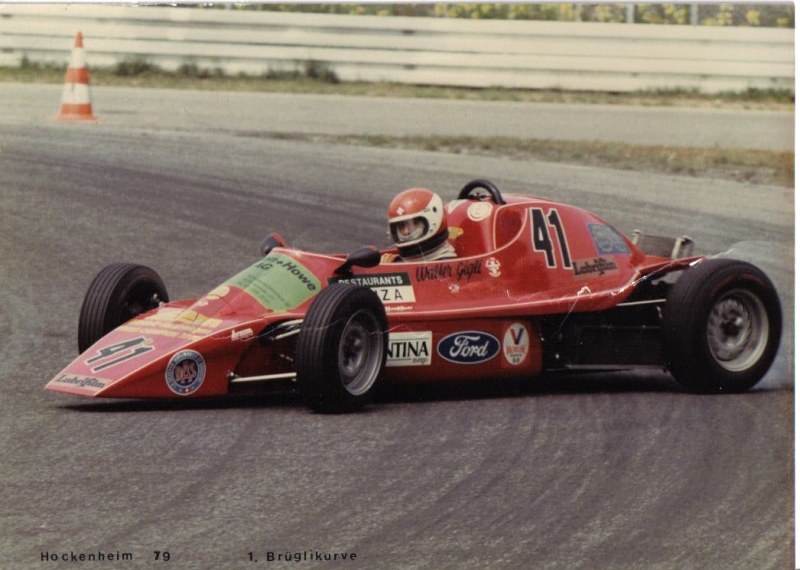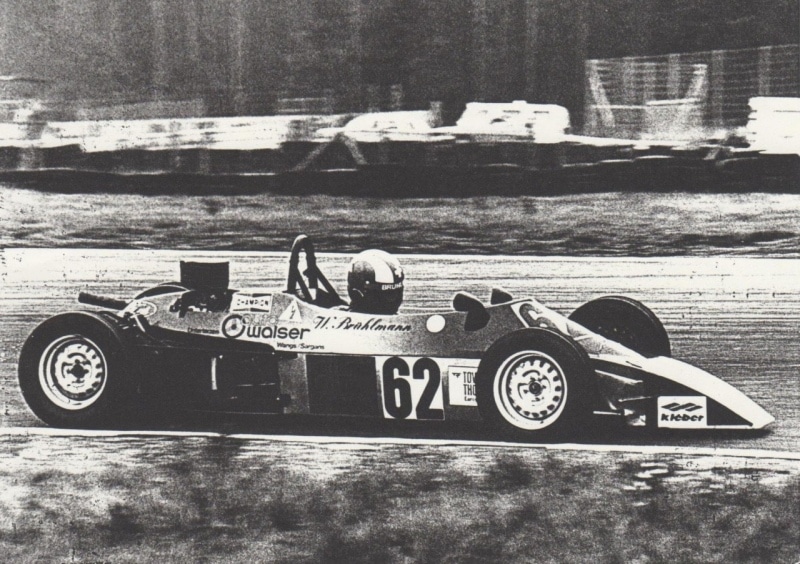The Elden Story
Success at Last
In order for the Hampsheirs to continue to make cars they needed support. Elden’s bank manager put the Hampsheirs in touch with John Brise, a former 500cc F3 driver who later turned to Stock Car Racing and became the World Champion. John’s seventeen year old son Tony, having won the British Kart Championship, was looking to move into car racing and John wanted to be more than just a customer to their chosen chassis supplier and so was looking for a deal with a manufacturer.
The agreement was for John to cover the material cost of building a Formula Ford for Tony to race providing it reached a certain level of performance, namely 53 seconds around Brands Hatch with Tony driving – this at a time when the lap record was 53.2s! So limited were the funds that Brian had to produce the glass fiber bodywork in house. Never having worked with GRP before, the resulting body was, whilst serviceable, were not professional – leading Motoring News to refer to it unkindly as being made out of cold porridge.
On its first day of testing the car ran faultlessly all day with Tony recording 55.2s after 56 laps. During the third day’s testing Tony recorded a time of 53.2s which John Brise decided was good enough and accepted delivery of the car – and the Mk8 was born.
Tony went on to win 33 races during the year, the Townsend Thorenson Championship and 6 lap records. Not bad for cold porridge!
Towards the end of the year Tony was hearing reports of people saying it was the car he was driving rather than his ability that accounted for his success. Elden on the other hand were hearing the opposite argument that, but for Tony the chassis would not be a winner. To answer these critics Tony moved to Merlyn to prove he could win in that as well. Tony’s younger brother Tim Brise took over the car and proceeded to finish fourth in his first Championship race at Mallory Park.
Despite all this success, and the superb production bodywork by “Marchant & Cox”, sales did not follow and in desperation two giveaway deals were offered to Mike Catlow and Colin Crang. The first time these cars appeared at Brands Hatch, Catlow secured pole, Crang was next up with Tony Brise in 3rd position in his Merlyn completing the front row. On the inside of the third row sat Tim Brise. The only three Elden Mk8s in existence held three of the first 6 places on the grid. In the race Tim suffered an accident, but Catlow won with Crang second.
This single race opened the floodgates and Elden were completely overwhelmed with sales enquiries. This was a massive problem for the company which was still operating out of Peter Hampsheir’s garage with no staff or factory. Fortunately Mike Catlow, who was working as a car builder with Palliser Racing Cars suggested he could help build cars at his garage at home. Elden kept him supplied with kits and he worked tirelessly to produce nearly one car per week. Similar arrangements were make with a few others and the company became financially viable. Further orders from the USA, Canada and Germany boosted both finances and confidence.
One inquiry was from Vern Shuppen on behalf of Ken Tyrrell. A friend of Tyrrell’s was helping a young driver called Danny Sullivan and wondered if Elden could do some sort of deal with the young man as he only had a small budget. This was agreed and after Danny had put his car together he entered a club race at Snetterton and finished third in his first ever race.
In October 1971, John Webb of Brands Hatch asked if Elden would exhibit a car in his showboat exhibition to be held on a car ferry moored next to HMS Belfast on the Thames opposite the Tower of London. One useful outcome of this was a sponsorship deal with Catnic Steel Lintels. The best customer without doubt was the Ian Grob team who bought three cars for Ian himself, Buzz Buzaglo and a young Mexican, Johnny Gerber. After driving the cars to some considerable success they decided to finance the construction of a new body designed by an aerodynamicist from March Racing Cars, Dennis Falconer. The bodywork, when it appeared caused a sensation, and in its first few races prompted a number of official protests, which were taken as a compliment – after they had been rejected by the RAC. The one point that was conceded was to lower the rear tail cover to reduce downforce. This however reduced drag and made the car even quicker. Gerber went on to win the World Cup in the car.
Buoyed up by success Elden decided to produce a Formula Three car. The highly modified Mk8 frame skinned in aluminium a sporting a Holbay Ford twin Cam engine, revolution wheels and wings from G.P.Metalcraft looked promising. Called the Mk9, this car was test driven by Mike Catlow. Not surprisingly, Formula Three costs are in a different league to FF1600 and this constrained the development of the car. Mike Catlow finishing mid field in the few races in which it competed. Several other drivers tried it out including Tony Trimmer who commented that it was at least as good as any other F3 car he had driven.




